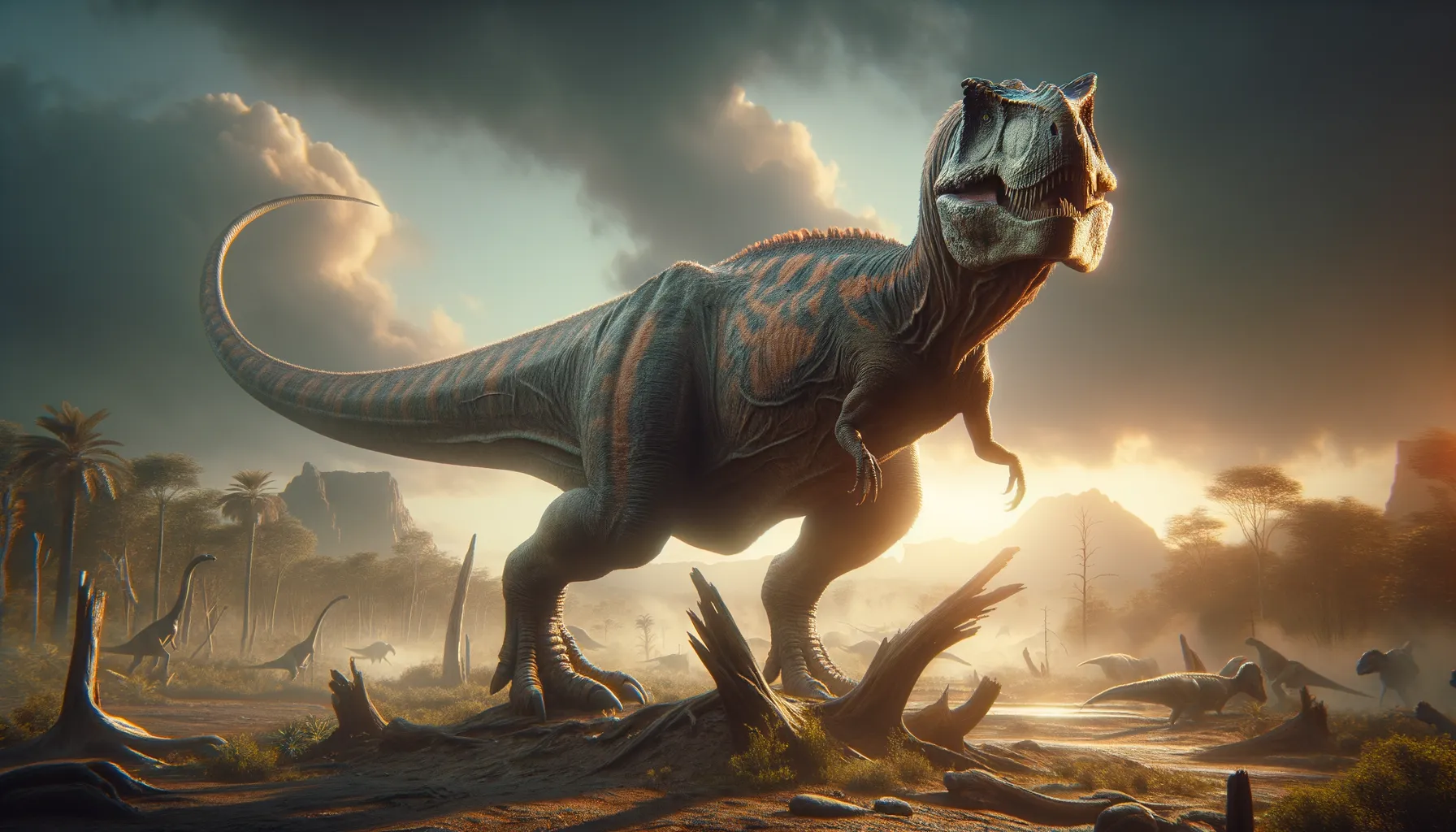
Bahariasaurus
A giant predator of the prehistoric Sahara.
Period
Cretaceous
Length
Around 11 meters long.
Height
About 4 meters tall.
Weight
Approximately 4,000 kilograms.
Bahariasaurus was a large theropod dinosaur that roamed North Africa during the Cretaceous period. Known for its formidable size and predatory nature, this dinosaur was a prominent carnivore in its environment. It is primarily known from partial remains, leaving much of its biology and lifestyle a topic of research and debate among paleontologists.
Diet
Bahariasaurus was a carnivore that likely preyed on other large dinosaurs. Its diet would have included herbivorous dinosaurs and smaller theropods. Evidence suggests that it had strong jaws capable of tackling substantial prey.
Hunting
It is thought that Bahariasaurus was an opportunistic hunter, relying on its size and strength to overpower its prey. Its hunting strategies might have involved ambush tactics, using its environment to sneak up on unsuspecting animals.
Environmental challenges
Living in the Sahara region during the Cretaceous meant dealing with a dry and hot climate, which would have impacted the availability of water and food. It needed to compete with other large predators in its ecosystem, such as the Spinosaurus. Natural disasters like droughts or floods could have posed survival challenges, as well as shifts in available prey species.
Speed
Moderate runner with agile movement.
Lifespan
Estimated to live around 20 to 30 years.
First discovery
First discovered in Egypt in the early 20th century.
Fun Facts
- Bahariasaurus was a large carnivorous dinosaur that lived around 95 million years ago during the Cretaceous period.
- It was discovered in Egypt in the Bahariya Oasis, which is how it got its name.
- This dinosaur was part of a group called theropods, the same group that includes the famous Tyrannosaurus rex.
- Bahariasaurus could possibly have been one of the top predators in its environment, preying on other large dinosaurs.
- Although complete fossils are rare, it is believed Bahariasaurus could have been as long as a bus, reaching up to 12 meters.
- Bahariasaurus might have had a similar body structure to other large theropods, with strong legs for running and sharp claws for hunting.
- The original fossils of Bahariasaurus were unfortunately destroyed during World War II, but new discoveries continue to shed light on this fascinating dinosaur.
Growth and Development
Bahariasaurus likely experienced rapid growth in its early years to quickly reach a size where it could defend itself from predators. Juveniles would have been vulnerable to other carnivores, and reaching maturity was essential for reproduction. Growth rates can often be inferred from bone histology, though specific studies on Bahariasaurus are limited due to scarce fossil evidence.
Habitat
Its habitat was the lush and river-rich environment of the prehistoric Sahara, which was much more hospitable during the Cretaceous than it is today. This area would have included forests, river systems, and floodplains providing a rich setting for both prey and predators. The climate was warmer, supporting diverse plant and animal life.
Interaction with other species
Bahariasaurus would have interacted with other large predators and herbivorous dinosaurs in its region. Competitive interactions likely occurred with rivals over territory and food resources. These interactions could have ranged from territorial disputes to joint predation opportunities if food was abundant.
Natural lifespan
Bahariasaurus's natural lifespan was potentially up to 30 years.
Reproduction
Like other theropods, Bahariasaurus is believed to have laid eggs, with nesting sites possibly positioned in safe, hidden areas. Parental care is a possibility, with some theorizing that females may have guarded the nests. Fossilized eggs have yet to be directly associated with this genus, leaving much of its reproductive behavior speculative.
Social behaviour
Bahariasaurus's social behavior is still largely unknown, but it is assumed that it could have been solitary or lived in loose aggregations. Interaction with conspecifics might have ranged from cooperative hunting to fierce competition, especially amongst males during mating seasons. Evidence of pack hunting or other social structures has not been definitively proven.
Fossil locations
The first and most notable fossils of Bahariasaurus were discovered in Egypt's Bahariya Formation. This area has been a rich source of dinosaur fossils, offering insight into the diverse prehistoric fauna of North Africa. Due to historic conflicts and environmental factors, further excavations and discoveries have been challenging.
